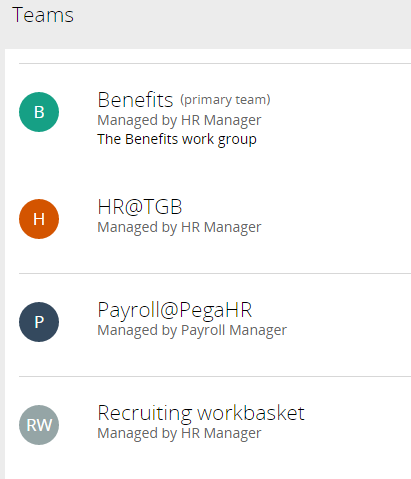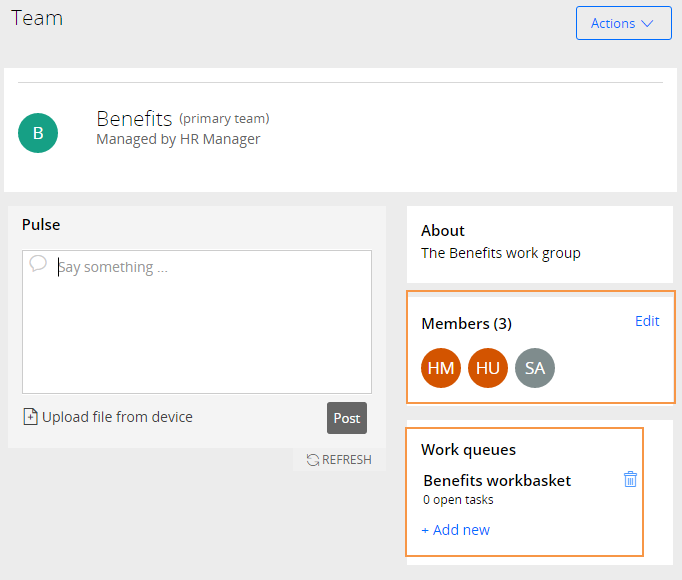
Work groups
Work groups
A work group identifies a cross-functional team that contains a manager, a set of operators, and a work queue. You create work groups so that resources can be shared among units, divisions, or the entire organization. Even though operators and work queues belong to a unit, associating a work group with an operator allows the operator to share work with operators in other units.
Each work group contains one work queue that can be shared by operators associated with the work group. In the following example, some operators in the HR unit and Training unit are associated with the Onboarding work group and share work with other operators in the work group. Only one operator from the HR unit belongs to the Onboarding work group. An operator must be associated with at least one work group and can belong to more than one work group.
Note: The operators not shown in the Accounting or Onboarding work groups belong to other work groups that are not displayed in the illustration.
In the following example, one operator in the Accounting work group is also associated with the Onboarding work group; this allows the operator to share work with the other operators in the Onboarding work group. Associating work groups on the operator record allows businesses to manage how individuals share work without affecting the organizational hierarchy.
A work group is an organization rule but is not a level of the three-level hierarchy. The system does not constrain work group membership based on organization structure. Members of a work group may belong to different organization units, divisions, or even different organizations.
A work group instance identifies one user who is the work group manager. The system can use manager information in a work group for notification tasks and routing tasks. Work groups give managers the flexibility to assign, monitor, and report on work performed in each work group.
Managers use the Case Manager portal to access the work performed in work groups. The Case Manager portal refers to work groups as teams. The following image shows work groups displayed as Teams in the Case Manager portal.
The portal allows managers to drill down and monitor work for each team member and work queue in all the associated teams. For instance, a manager can select a member icon to open the member worklist. If the member belongs to more than one team, the manager can see the items the member is working on across all the teams. The manager can also add or delete operators and work queues in the Members and Work queues sections, respectively. In the Case Manager portal and work queues, operators are referred to as Members.
Teams can contain additional operators or Authorized managers. These members can transfer assignments. For example, if the team's manager is unavailable, an authorized operator can perform some of the manager's responsibilities. Authorized managers are not required to be part of the work group, so they are not allowed to perform approvals or complete assignments.


